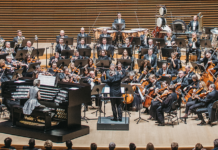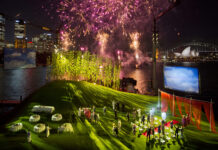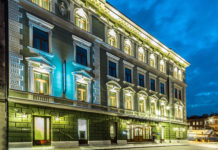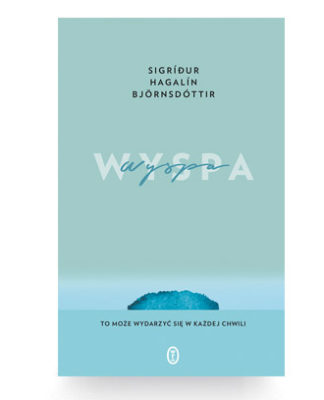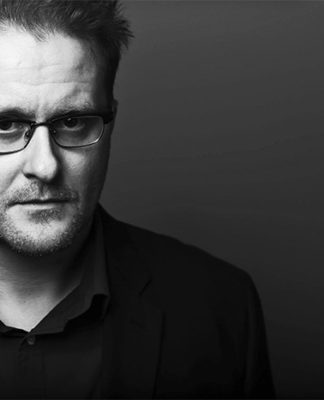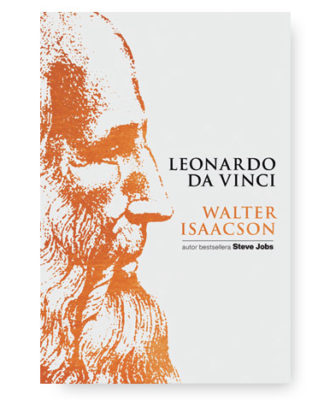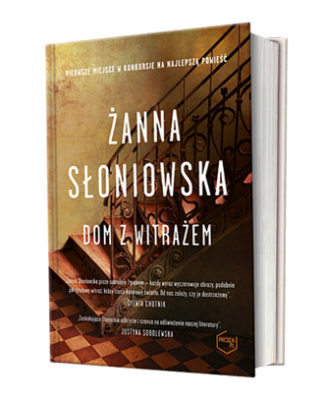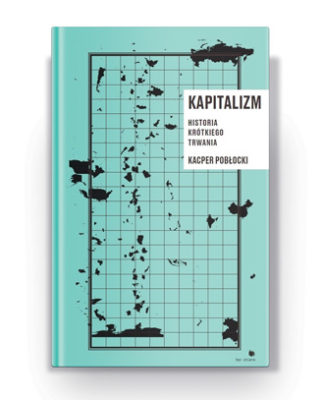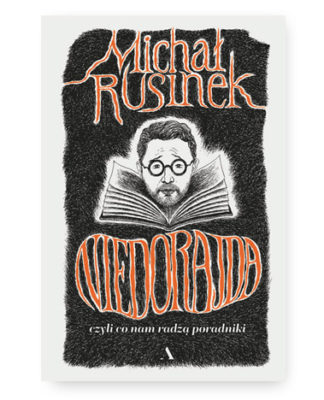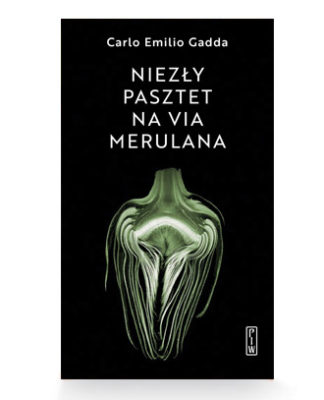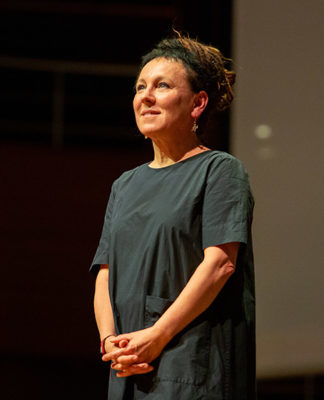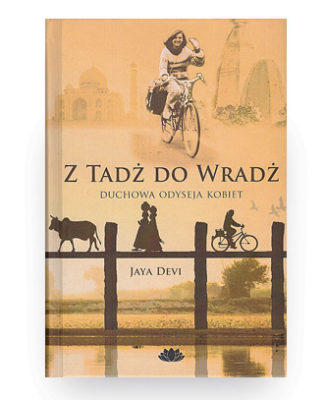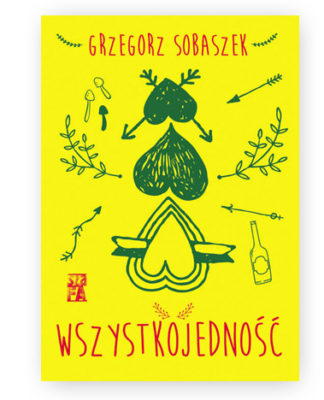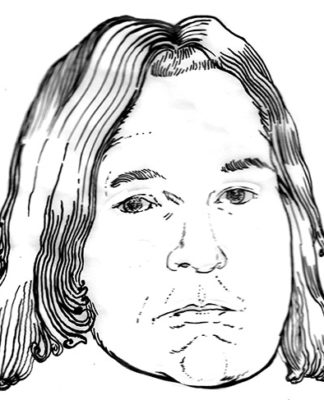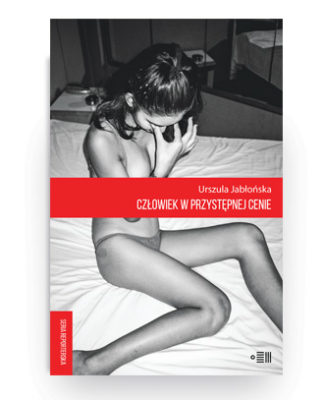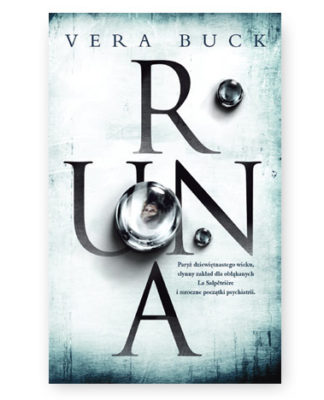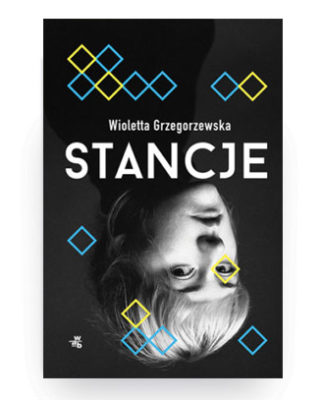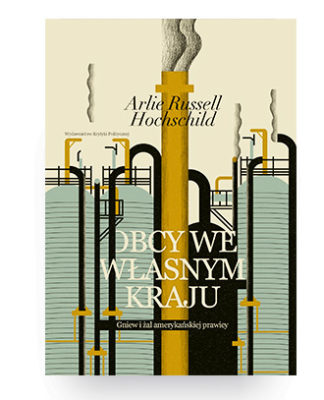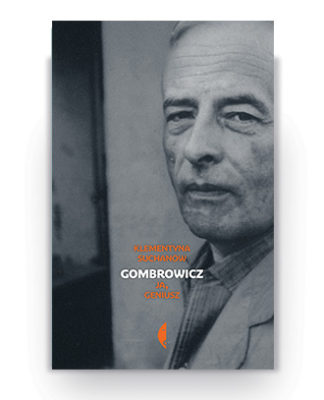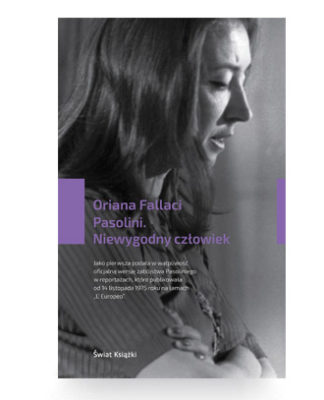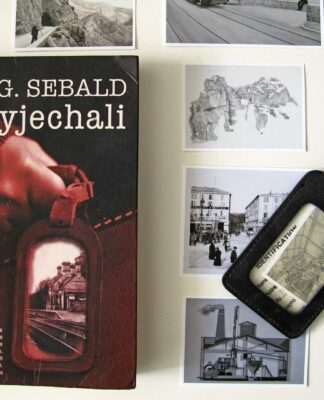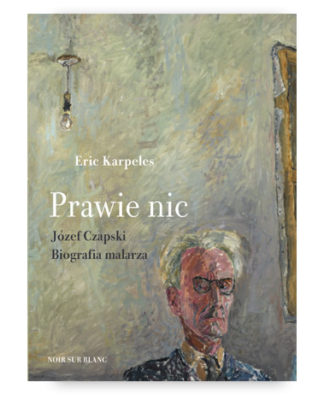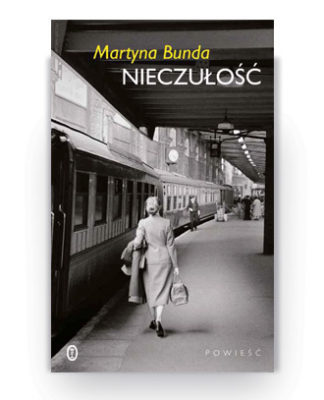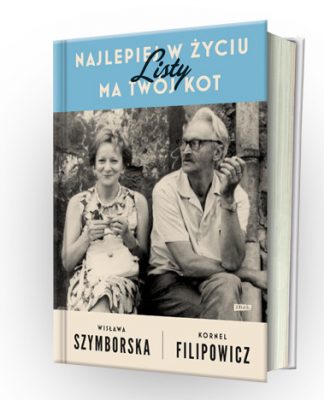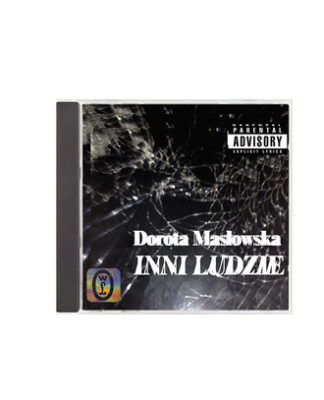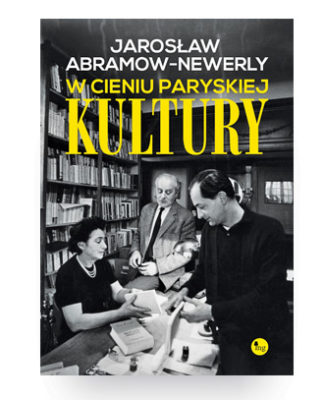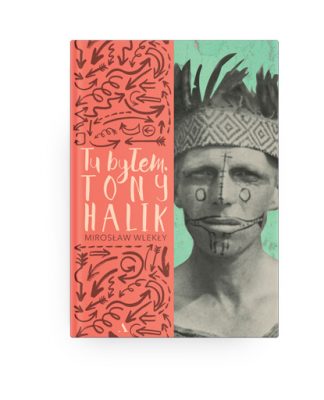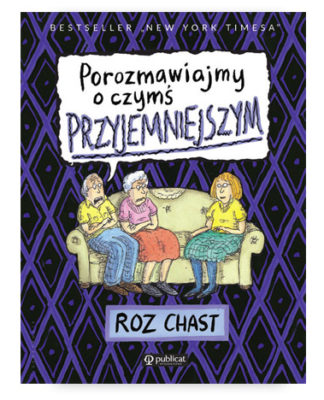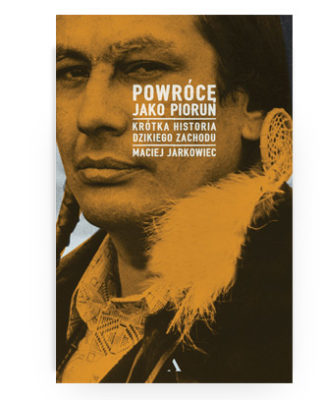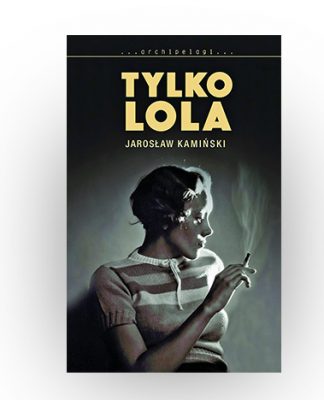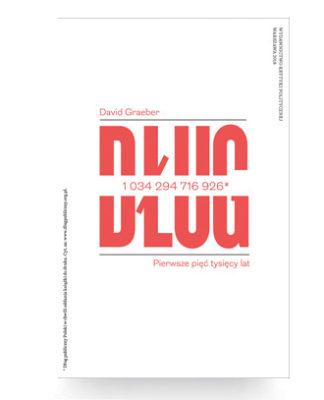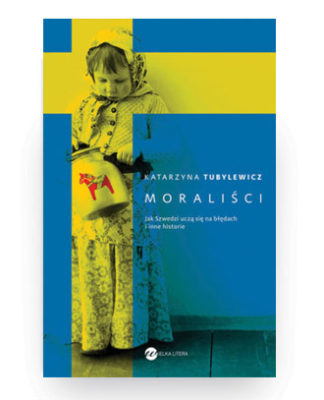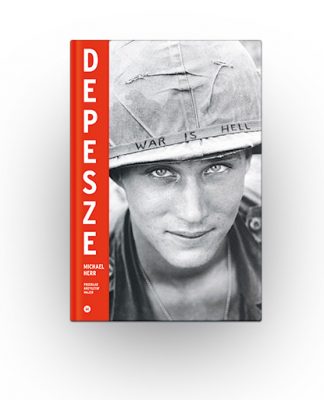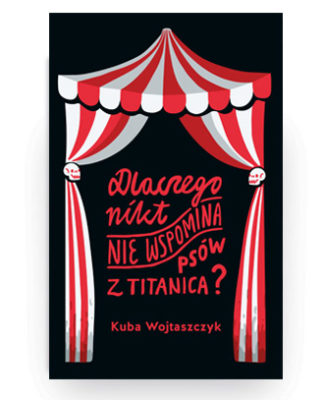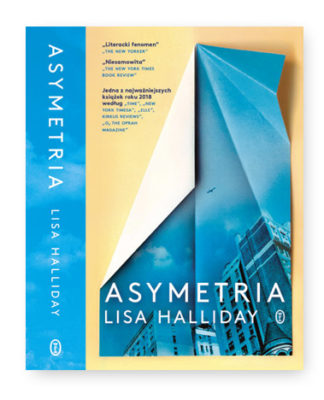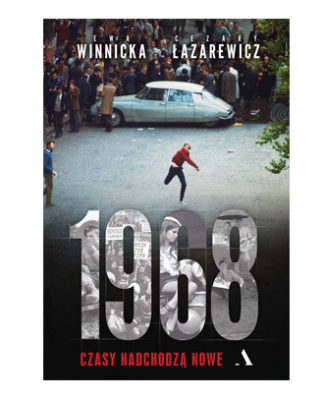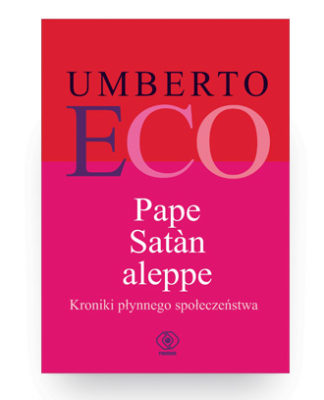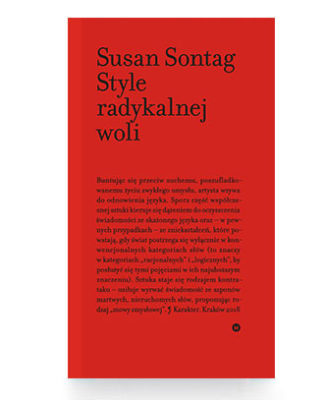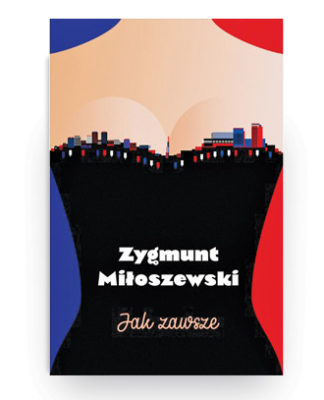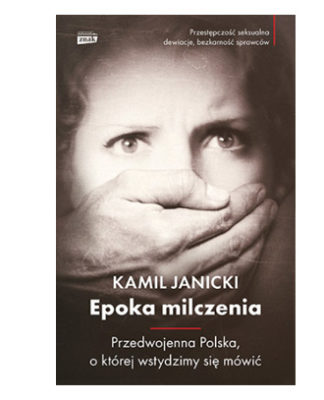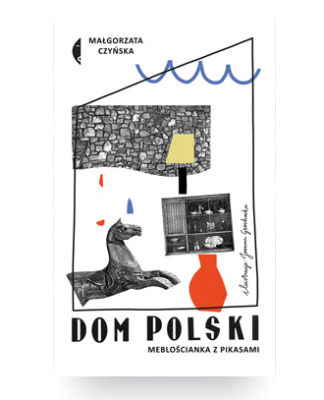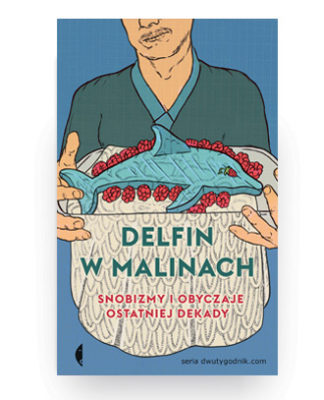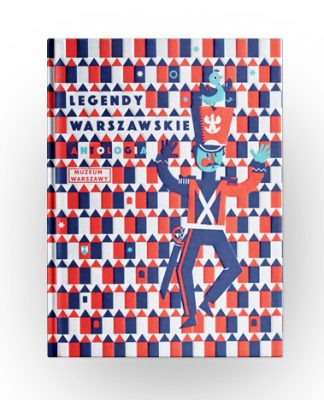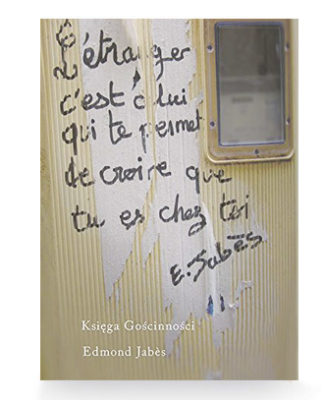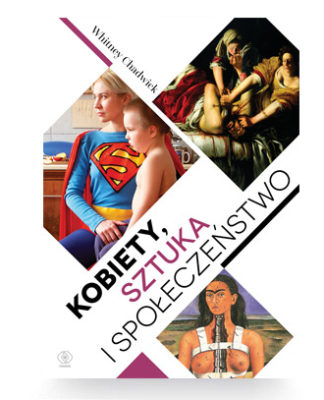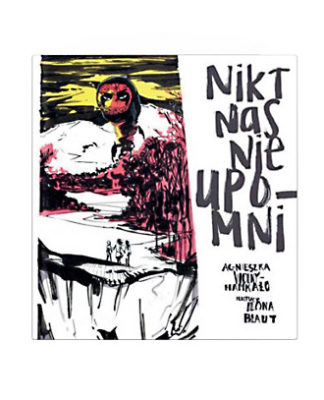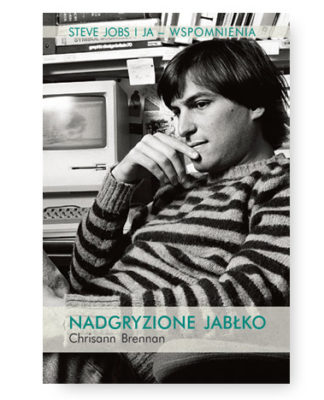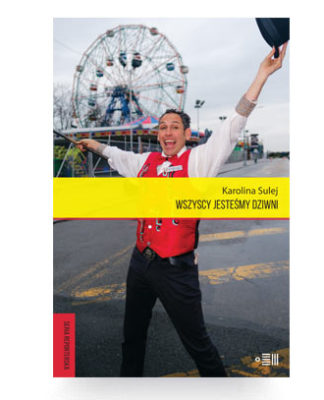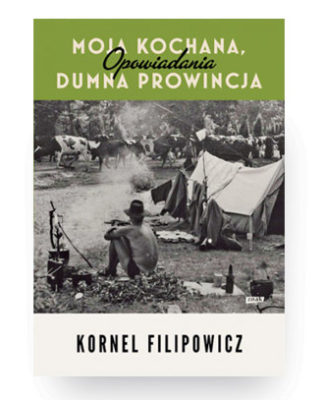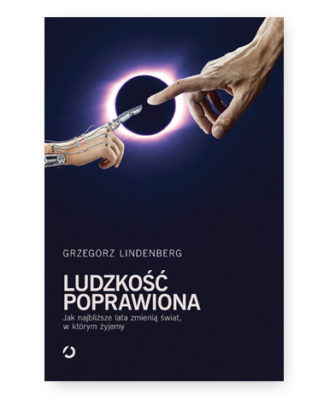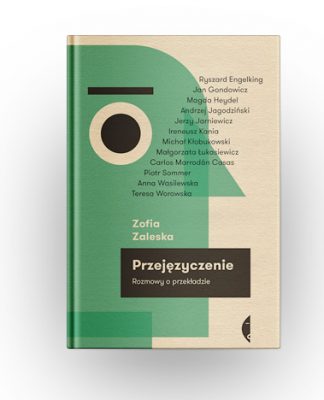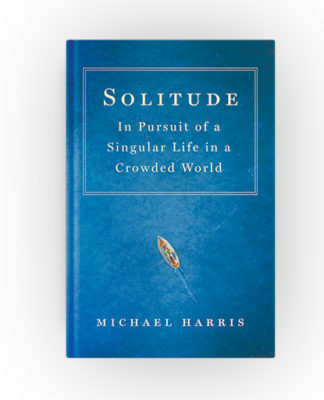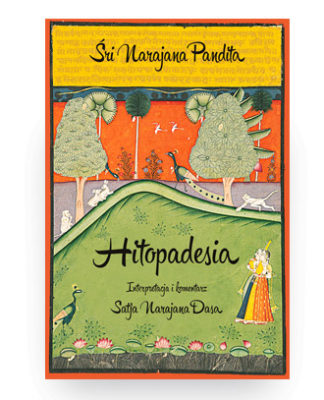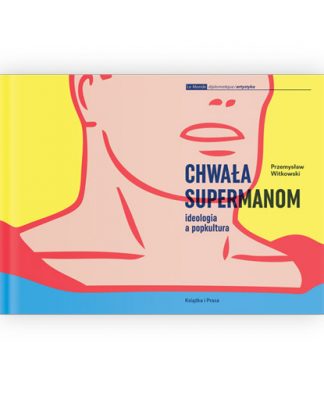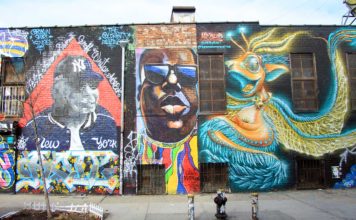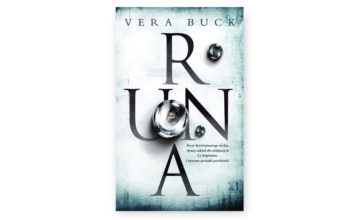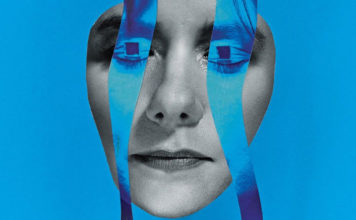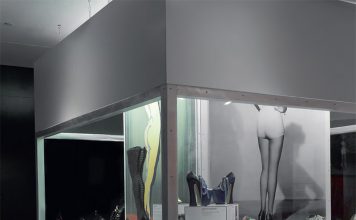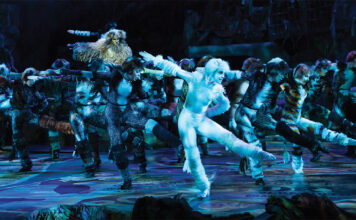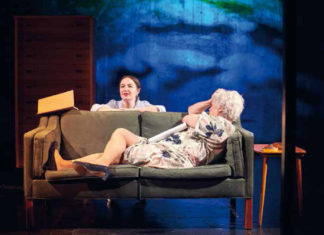Podczas spotkania z Allanem Starskim natychmiast uderza jedna rzecz. Jak niesamowicie skromną jest on osobą. Laureat Oscara bardzo sobie ceni nagrodę Stowarzyszenia Autorów Zdjęć Filmowych (PSC) za całokształt twórczości albo to, że miał szczęście odtworzyć swoje dziecięce wspomnienia w scenografii sztuki poświęconej pamięci ojca, Ludwika Starskiego. Wytwórnia piosenek została wystawiona na deskach Teatru Powszechnego w Łodzi. Zeszłoroczna premiera połączona była z uroczystością odsłonięcia gwiazdy Allana Starskiego na ulicy Piotrkowskiej. Spotykamy się, by porozmawiać o tym, co lubi w życiu najbardziej – o jego pracy.
Tekst: Jansson J. Antmann
Zdjęcia: Michał Zagórny
Jaka jest różnica między filmem a teatrem?
Olbrzymia. Po pierwsze teatralna publiczność ma świadomość obcowania z dekoracją ustawioną na scenie. Ma świadomość, że jest umowna, a to daje scenografowi swobodę działania. To jak kontrakt między twórcą a widzami, co daje uprawnienie do tego, by przekonać ich do swojej wizji. Z kolei na kinowym seansie publiczność musi uwierzyć w bohaterów i ich historie. Aby uwierzyć w bohatera, musisz wierzyć, że należy on do prawdziwego świata. Nawet jeśli jest to film science fiction, musi wyglądać realistycznie, aby by być przekonującym.
Pierwsze kroki robiłem w filmie, nie w teatrze, chociaż, śmieszna sprawa, nie studiowałem ani tego, ani tego. Skończyłem Wydział Architektury Wnętrz na warszawskiej Akademii Sztuk Pięknych ze specjalizacją w projektowaniu wystaw i targów. Ale mój ojciec był reżyserem i scenarzystą. Dorastałem w domu, gdzie zawsze dyskutowało się o filmach i poznałem wielu ludzi związanych z branżą filmową. A jednak pracowałem w obu tych branżach. Skala! Różnica tkwi w skali. Teatr to luksus. Tworzysz scenerię, oczywiście przedyskutowaną najpierw z reżyserem. Tu projektuję nie tylko dekoracje, ale i oświetlenie. Chodzę na wszystkie próby, dyskutuję z aktorami, jestem więc prawdziwym artystą. W filmie nie tylko muszę być artystą, ale też dobrym rzemieślnikiem i organizatorem, bo, zwłaszcza w większych produkcjach, trzeba zarządzać zespołem ludzi, który buduje scenografię. Są to moi asystenci, dekoratorzy i wiele innych ludzi, którzy ze mną współtworzą scenografię. Robienie filmu to jak kierowanie dużym przedsiębiorstwem. Zauważyłem, że scenografowie, którzy mają tylko doświadczenie w teatrze, zwykle potrzebują pomocy, kiedy wkraczają w świat filmu, bo nie są przyzwyczajeni do ogromu dekoracji, którą trzeba stworzyć. W teatrze zwykle mamy dwie albo trzy zmieniające się dekoracje. W jakimkolwiek filmie jest ich 40, 50, a nawet setka.
Co więc te dwa światy mają wspólnego?
Kiedy uczysz się, by zostać scenografem, niezależnie od tego, czy w filmie, czy teatrze, musisz wiedzieć, jak zapełnić przestrzeń ścianami i przedmiotami, ale przede wszystkim – jak rysować i jak robić szkice i rysunki, by były łatwo zrozumiałe dla reżysera, operatora obrazu i często producenta. Kiedy już raz wejdzie się do tego biznesu, trzeba się wszystkiego uczyć w praktyce. Prowadzę wiele warsztatów dla studentów i widzę, że dzisiaj nie mają oni tak dużej wiedzy, jaką miałem ja, kiedy zaczynałem pracę w filmie. Może są bardziej wyspecjalizowani w teorii o produkcji filmowej albo telewizyjnej, ale wiedza o tym, jak pracować w tej branży, to coś, co można zdobyć tylko w praktyce.

To przypomina mi, kiedy spotkałem legendarnego scenografa czeskiego Josefa Svobodę. Pamiętam, że miał obsesję na punkcie tego, jak ktoś trzyma ołówek…
Tak, rysunek, to jest klucz do zawodu… To niesamowicie ważne. Komputery czy obrazy generowane komputerowo – to wszystko jest wtórne. Kiedy asystenci albo absolwenci Akademii pokazują mi swoje portfolio, zawsze patrzę, w jaki sposób opisują swoje prace, patrzę na liternictwo, bo ono pokazuje, czy są sprawni w rysunku, czy nie. Możesz mieć własny styl, ale ze sposobu pisania wynika, czy czujesz się pewnie w rysunku, czy nie.
Jak to jest pracować z tak wieloma różnymi reżyserami?
Na początku staram się wywrzeć na nich wrażenie, jeszcze zanim zaczniemy razem pracować. W końcu tą branżą też rządzą prawa rynkowe. Weźmy na przykład Stevena Spielberga. Wiedziałem, że do Listy Schindlera rozważał czterech czy pięciu innych scenografów. Przy pierwszym spotkaniu chodziliśmy po Krakowie i rozmawialiśmy o filmach, estetyce poszczególnych scen. Pytałem go o Szczęki i o to, jak je kręcił. Staraliśmy się zrozumieć siebie nawzajem i czy będziemy w stanie pracować razem przez cały rok. Ważne, żeby była chemia. Oczywiście potem zacząłem rutynową pracę, spędzając z nim czas na location scouting i pokazując moje szkice i rysunki.

Oczywiście każdy reżyser jest inny. Mają różną wrażliwość, osobiste podejście artystyczne.
Andrzej Wajda studiował na ASP, więc wie, jak robić świetne rysunki i komunikować się przez nie. Kiedy omawiamy razem film, on ciągle robi szybkie szkice, co pozwala łatwo zrozumieć jego wizję. Jest też bardzo otwarty na pomysły swoich współpracowników, jest dobrym słuchaczem. Nie wykorzystuje może wszystkich pomysłów, ale wysłuchuje ich, omawia i czasami zmienia jakąś scenę, bo na przykład zaproponowana lokalizacja zmienia sposób, w jaki ją wcześniej widział.
Spielberg jest większym introwertykiem. Mówi, czego potrzebuje, a ty starasz się spełnić jego warunki, z drugiej strony daje wolną rękę, jeśli chodzi o design. Potrzebuje miejsc, w których mógłby kręcić zgodnie ze scenariuszem, ale już kolory, faktury, patyna, wybór rekwizytów zależą od scenografa. To może być mocno stresujące, bo dopiero w momencie kręcenia sceny ocenia dekoracje. Na szczęście zawsze uznawał i akceptował to, co robiłem. Gdyby było inaczej, to byłaby katastrofa!
Roman Polański natomiast wie, co chce osiągnąć i trzeba go uważnie słuchać. Wie, czego chce, nawet odnośnie specyficznych rekwizytów i wymaga tego w najdrobniejszych szczegółach. Wie, jak będą wyglądały wszystkie sceny, bo przed kręceniem zdjęć przeprowadza bardzo precyzyjne próby. Oczywiście staram się znaleźć dla siebie przestrzeń, by rozwinąć moje pomysły. Na przykład w Oliverze Twiście miałem za zadanie zbudować Londyn, oglądaliśmy obrazy i rysunki z tego okresu i rozmawialiśmy, jak powinna wyglądać scenografia. Potem, gdy zacząłem projektować i budować, dostałem wolną rękę. Jednak gdy przyszła kolej na rekwizyty czy istotne detale, Roman wymagał, bym realizował jego pomysły bardzo ściśle.
Każdy reżyser jest inny. Dobrze, gdy jestem jego partnerem. Niektórzy traktują mnie jak współpracownika i współtwórcę filmu, inni po prostu jako scenografa… Zależy.
Podobne tematy filmów powracały przy różnych reżyserach…
Kiedy Polański zdecydował się nakręcić Pianistę, wybrał mnie, bo wiedział, że mam doświadczenie w tworzeniu scenerii wojennej. Żartując, producenci powiedzieli: „Teraz zrobisz Listę Schindlera w kolorze!”. Oczywiście te dwa filmy są zupełnie inne. To pokazuje, jak reżyserzy wpływają na styl. Spielberg o czasach wojny w Polsce nauczył się z pamiętników, fotografii i z rozmów z ocalałymi. Polański z kolei pamiętał te czasy. Obaj kierowali się innymi emocjami, są innymi ludźmi, więc te dwa filmy są zupełnie inne.

A jakie jest pana podejście do remake’ów, jak w przypadku Olivera Twista?
Widziałem poprzednie filmowe wersje i najbardziej podobała mi się ta z 1948 roku, Davida Leana. Ostatnio prowadziłem na Litwie warsztaty, na których spotkałem scenografa, który robił scenografię do Olivera Twista dla BBC, już po mojej wersji. Podzieliliśmy się doświadczeniami i okazało się, że też najbardziej podobał mu się film Leana. Nie znaczy to jednak, że nasze scenografie przypominały ten film albo coś z niego kopiowały. On dysponował skromnym budżetem, zdjęcia kręcone były głównie w naturalnym angielskim plenerze. Ja z kolei zbudowałem wszystko w Barrandov Studios w Pradze. Ponieważ budowałem mój Londyn od podstaw, mogłem stworzyć moją własną interpretację tego, jak wyglądało to miasto.
Kiedy przy angielskojęzycznej osobie używa się słowa dickensowski, to ma to bardzo specyficzną konotację i jest synonimem przełomowych dekoracji Johna Napiera do Nicholasa Nickleby dla Royal Shakespeare Company. Jak stawił pan czoło dickensowskiemu Londynowi?
Omawialiśmy tę kwestię z Polańskim wiele razy. Interesowała go epoka wczesnego industrializmu. Punktem odniesienia były dla nas niesamowite czarno-białe szkice z drugiej połowy XIX wieku autorstwa Gustava Dore’a, który zresztą był Francuzem. To był nasz punkt wyjścia. Wie pan, londyńskie doki z tymi wszystkimi dźwigami… To trochę jak nasze własne Powiększenie Antonioniego, nasz Londyn, bardzo osobisty (śmiech). W każdym razie pamiętam, jak Jamie Foreman, który grał Billa Sikesa, wdrapał się na szczyt jednego z wybudowanych przeze mnie atrap budynków, spojrzał w dół i wykrzyknął: „O, to jest róg ulicy, przez który przechodziłem codziennie, idąc do szkoły!”. Mój Londyn jest syntezą różnych obrazów, i jak sam pan wspomniał, dla każdego znaczy coś innego.
Jest jedna dobra rzecz: byłem Polakiem budującym Londyn w Pradze, a nikt nigdy nie zarzucił mi błędu albo braku dokładności. Kiedy projektuję scenografię w Polsce, ludzie często coś mi wytykają!

Jak ważna jest dla pana historyczna poprawność i jak bardzo wpływa ona na pana pomysły?
Robiłem scenografię do filmu o Franciszku Szubercie Notturno. Kiedy przyjechałem do Wiednia, reżyser filmu, Fritz Lehner, sprezentował mi wszystkie nagrania Szuberta i kazał mi ich słuchać, bym mógł czerpać inspirację z tej muzyki. Zrobiłem tak, jak mówił, ale tak naprawdę nie pomogło mi to w projektowaniu scenografii. Pomogło mi za to zwiedzanie muzeów i szukanie obrazu Wiednia głębiej niż ten pokazany w oficjalnym malarstwie, na którym jest on nieskazitelnym i czystym miastem. Wie pan, co odkryłem? Tam była cenzura! Cesarz cenzurował obrazy i życzył sobie, żeby uwiecznić Wiedeń jako „miasto idealne”. Zacząłem czytać na temat Wiednia, o brudzie i błocie w tym mieście… o ulicach bez bruku. To pomogło mi stworzyć Wiedeń „prawdziwy”. Z kolei kiedy kręciliśmy z Andrzejem Wajdą Dantona, odkryłem, że istniały różne rodzaje gilotyn. Niektóre miały barierki wokół platformy, a inne nie. To była bardzo istotna informacja dla mnie, bo musiałem zdecydować, jak ma wyglądać ta nasza w filmie. Zacząłem badać tę sprawę głębiej i dowiedziałem się, że początkowo nie było w gilotynach barierki, żeby zgromadzony tłum miał lepszy widok na egzekucje. Kat był zwykle tak pijany, że wreszcie spadł i złamał kark. Dodali więc barierkę. Jak widać BHP obowiązywało nawet wtedy! Na wszelki wypadek sprawdziłem daty i okazało się, że w czasach Dantona nie było barierek, więc w końcu ich nie daliśmy. Tak naprawdę, gdy jest się scenografem, wspaniałą rzeczą jest interpretacja, ale poparta solidnym reasearchem, bo wiem, że kiedy robię scenografię, muszę mieć jak największą wiedzę na temat danego okresu historycznego.
A czy zdarzyło się, że miał pan ochotę zrobić coś szalonego, ekspresyjnego, awangardowego, coś na przekór?
Gdybym był reżyserem, na pewno, ale moja praca polega na realizowaniu wizji reżysera.
Choć za dokładność historyczną odpowiadam ja!
To nie oznacza, że jestem niewolnikiem tej dokładności. Interpretuję historię. Dobrym przykładem jest Notturno, który jest nurzącym, ale pięknie zrealizowanym filmem. Pamiętam taką scenę: Szubert leży na łożu śmierci i patrzy na zegarek kieszonkowy. Gdy umiera, wskazówka sekundowa przestaje się ruszać. Kiedy poszedłem do Muzeum Zegarków w Wiedniu, odkryłem, że wskazówka sekundowa została wynaleziona i zastosowana w zegarkach kilka lat po śmierci Szuberta. Udało nam się jednak znaleźć zegarek z przybliżonego okresu, a ponieważ ten moment był niezwykle istotny w filmie, zdecydowałem się nagiąć historię i dorobić sekundnik.

W przypadku Dantona również była to nasza interpretacja rewolucji francuskiej. Wajdy i moja. Zgodnie z tym, czego uczą w szkołach, Robespierre jest prawdziwym bohaterem, a Danton jest skorumpowany. Jednak Wajda oparł swój film na sztuce teatralnej Przybyszewskiej, a w niej to Danton okazuje się być bohaterem. To wpłynęło na moje podejście do tematu. Obraz rewolucji to suma naszych współczesnych doświadczeń. Zdjęcia do Dantona kręciliśmy podczas stanu wojennego i delegalizacji Solidarności w Polsce. Skorzystałem z wiedzy na temat totalitaryzmu, działania komunistycznego systemu w naszym kraju, by oddać ideę francuskiej rewolucji. Rewolucja z jednej strony była ruchem bardzo postępowym, a z drugiej nowym reżimem rządzącym się swoimi prawami, które niszczyły arystokrację, pałace i zagrabiały ich bogactwo. To był też początek nowej biurokracji, więc stworzyłem kilka scen, w których rewolucjoniści grabili pałace i sporządzali listy dokumentujące rzeczy, które sobie przywłaszczyli.
Nasza współczesna wiedza i doświadczenie zainspirowały film. Andrzej Wajda chciał pokazać rewolucjonistów jako ludzi, którzy nigdy nie śpią. Pracowali, spiskowali nocami i byli wykończeni. Aby to podkreślić, postanowił częściowo wyeliminować z filmu czerwień. Dzisiaj to bułka z masłem, można to uzyskać w procesie postprodukcji poprzez grading (korekcję obrazu), ale wtedy musieliśmy wymazać czerwień z negatywów, co było nie lada sztuką. Dzięki temu ich twarze były bledsze, co pokazywało wyraźniej, jak bardzo są nieogoleni i jak zmęczone mają oczy. Ja musiałem pomyśleć o reszcie kolorów w filmie, bo przecież symbolem rewolucji francuskiej jest czerwień, błękit i biel. Jak miałem to pokazać, jeżeli operator usunął część czerwieni?
I jak się to udało?
Pierwszą rzeczą, na którą zwraca się uwagę podczas gradingu filmu, jest twarz aktora i wiedza o tym, jaki efekt chce osiągnąć reżyser. Jak zmienią się ściany, kiedy zmniejszę ilość czerwieni na twarzach aktorów? Musiałem wziąć pod uwagę wiele rzeczy, musiałem przewidzieć ostateczny rezultat, wybierając kolory dekoracji tak, aby rekompensowały wyeliminowanie intensywnej czerwieni z Dantona. To nie tylko kwestia wizji, ale całego rzemiosła. Uwielbiam pracować z kolorem, od tego zaczynam każdy film. Wraz z reżyserem oglądamy malarstwo z danego okresu, omawiamy paletę kolorów używaną przez malarzy w tamtych czasach. Kiedy pracowałem nad Placem Waszyngtona, chciałem, by dom bohatera był bardzo ponury. Szukaliśmy odpowiednich obrazów w domach chirurgów z późnego XIX wieku. Zauważyłem, że malarze tego okresu używali dużo ciemnej zieleni. Nawet reżyserka filmu Agnieszka Holland pytała mnie, dlaczego jest tak wiele zieleni w tapetach i zasłonach. Chciałem uzyskać silny efekt naprawdę ciemnego domu, który potem przełamaliśmy akcentami czerwieni, takimi jak czerwony fotel właściciela, symbol jego autorytetu. W chwili śmierci jego żony przy porodzie również zastosowaliśmy dużo czerwieni. Takie kolorystyczne tricki bardzo pomagają dramaturgii filmu.

Ale Oscara zdobył pan za film czarno-biały!
Zdobycie Oscara to nie jest historia Kopciuszka. W przypadku scenografów tego rodzaju honor spotyka ich po paśmie sukcesów albo w pełni ich kariery. Proszę spojrzeć na Kena Adama, który zaprojektował fantastyczną, na wpół futurystyczną scenografię do filmu Dr. Strangelove i wspaniałą scenografię do filmów z Jamesem Bondem. Swojego pierwszego Oscara dostał za Barry’ego Lyndona Kubricka już po wcześniejszych, przełomowych filmach, drugiego zaś za Szaleństwa króla Jerzego. Miał już wtedy 70 lat. W moim przypadku Oscar pojawił się w kulminacyjnym momencie mojej wieloletniej już współpracy z wieloma wybitnymi reżyserami. Nie pracowałbym nad Listą Schindlera, gdybym nie miał już na koncie współpracy z Andrzejem Wajdą, zwłaszcza pracy nad czarno-białymi Korczakiem czy nominacji Emmy za Ucieczkę z Sobiboru w reżyserii Jacka Golda. Całokształt mojej współpracy z Wajdą dał mi niesamowite możliwości, jak choćby pracę nad przygotowaniami do Wyboru Zofii Alana J. Pakuli. Tak więc do momentu, gdy dostałem Oscara, miałem już ukierunkowaną karierę i liczący się dorobek. Jedyną zmianą, jakiej mógłbym dokonać w życiu, byłaby przeprowadzka do Hollywood. To zresztą doradzał mi mój agent. Ja jednak cenię artystyczną wolność i zostając w Polsce, mam swobodę w wyborze odpowiadających mi projektów i pracę nad filmami europejskimi, którymi się interesuję.

W poprzednim wydaniu naszego magazynu miałem okazję rozmawiać z reżyserką Marthą Coolidge, która mówiła, że film jest narzędziem upamiętniania „tego momentu”. Czy scenografa, który tworzy piękne dekoracje, otoczenia, nie boli nieco, gdy się je burzy po ukończeniu zdjęć i nic po nich nie zostaje oprócz tego, co zostało uchwycone w filmie?
Mam mieszane uczucia w tej kwestii. Po pierwsze, taka jest moja praca, więc jestem przyzwyczajony, że moje scenografie są niszczone po ukończeniu zdjęć. Po drugie, jeżeli moja praca byłaby zachowana, mogłaby pracować na moją niekorzyść. Ulica, którą zbudowałem na potrzeby Pianisty w Babelsburg Film Studio pod Berlinem, ciągle tam stoi. Wystąpiła już, z pewnymi modyfikacjami, w wielu filmach, na przykład w Bękartach wojny. W jednym filmie zmieniono ją na ulicę Chicago, w innym na Berlin. Nie mogę powiedzieć, że zawsze jestem zachwycony tymi zmianami. Czasami nieco mnie to złości, czasami śmieszy. Ale to nie jest moja własność – scenografia należy do producentów – i nie mam nic do powiedzenia w tym temacie. Z drugiej strony, zdziwiło mnie to, co zobaczyłem, kiedy trzy miesiące po zakończeniu zdjęć do Olivera Twista wróciłem do Barrandov Studios. Wróciłem tam, by kręcić film Hannibal. Po drugiej stronie maski. Nie mogłem uwierzyć, że w miejscu, gdzie zbudowałem londyńskie doki i gdzie płynęła Tamiza, rośnie łąka żółtych kwiatków. Wtedy zrobiło mi się trochę smutno. Z kolei moja scenografia do Pana Tadeusza Wajdy cieszyła się zupełnie innym losem. Została rozebrana i odbudowana jako skansen. Myślę, że jedyną trwałą konstrukcją, nad którą miałem przyjemność mieć kreatywną kontrolę, jest kompleks budynków w Hotelu Saski na Placu Bankowym 1. Podszedłem do tego tak, jakbym robił filmową scenografię, ale taką na stałe. Myślę o tym miejscu jak o cennej scenografii, która pozostanie dla potomnych. |
Zupa na lato – Chłodnik
Przepis dla 6 osób

Składniki:
pęczek botwinki z małymi buraczkami
2 ogórki
duży pęczek kopru
ząbek czosnku
2 duże kefiry i duży jogurt
12 sztuk jajek przepiórczych
szyjki rakowe
pieprz czarny, sól
Wykonanie:
Umyć botwinkę i buraczki, pokroić. Ugotować w połowie szklanki wody i ostudzić. Obrane ogórki zetrzeć na grube wiórki, dodać zgnieciony czosnek i posiekany koper. Wszystko zalać kefirem i jogurtem. Posolić i popieprzyć. Odstawić na 1 dzień do lodówki.
Podawać z szyjkami rakowymi i ugotowanymi na twardo, przekrojonymi na pół, jajkami przepiórki.
SMACZNEGO!
Asystent fotografa: Piotr Pazdyka, makijaż: Anna Parol
Dziękujemy za udostępnienie do sesji wnętrz Teatru Wielkiego – Opery Narodowej w Warszawie

![]()
The Colours of History
Meeting Allan Starski, one is immediately struck by how humble he is. The Academy Award winner really values his lifetime achievement award from the Polish Society of Cinematographers, or the opportunity to recreate his childhood memories on stage in a biography about his father, Ludwik Starski, in Song Factory (Wytwórnia piosenek) at the Teatr Powszechny in Łódź. Its premiere last year coincided with the unveiling of his star on the Piotrkowska Walk of Fame. We meet to talk about what he likes the most – his work.
Text: Jansson J. Antmann
Photographer: Michał Zagórny
What’s the difference between film and theatre?
There’s a big difference. Firstly, the members of a theatre audience know that they’re looking at sets on a stage. It’s like a contract that gives you, the designer, license to convince them of your vision. On the cinema screen however, audiences have to believe in the heroes and their stories. To believe in a hero, you have to believe he’s part of a real world. Even if it’s science fiction, it has to look real to be convincing.
I took my first steps in film, not theatre, although the funny thing is, I didn’t study either of them. I graduated in interior design at the Warsaw Academy of Fine Arts, specializing in design for exhibitions and fairs. My father, however, was a director and screenwriter. I grew up in a home where movies were always discussed and I met lots of people from the film industry. And I’ve since gone on to work in both. Scale! The difference is in the scale. Theatre is a luxury. Here you create scenery, which you of course discuss with the director. I don’t only design the look of the sets, but the lighting too. I attend all the rehearsals, I talk to the actors, I’m a real artist. In the movies, you have to not only be an artist, but also a good craftsman and organizer, because in the movies, especially larger productions, you have to manage the team of people who actually build the sets. I have my assistants, set decorators and lots of other people who create the sets with me. It’s a huge enterprise to make a film. I’ve noticed that set designers with only theatre experience, usually need assistance when entering the world of film, because they’re not used to the volume of sets that need to be created. In the theatre, you usually have two or three alternating sets. In any given film you can have 40, 50 or sometimes even a hundred.
So what do the two worlds have in common?
When you study to become a production designer, irrespective of whether it’s for film or theatre, you have to learn how to fill the space with walls and objects, but above all you need to know how to draw and produce sketches and drawings which can be easily understood by the director, the director of photography and often the producer. Once you start working in the industry you have to learn how everything works through practice. I conduct a lot of workshops with students and I see that today they don’t have more knowledge than I had when I started out in film. They may be more specialized in the theory of film or TV production, but the knowledge of working in the industry is really something you only gain through practice.

You’ve reminded me of when I met the legendary Czech set designer, Josef Svoboda. I remember he was obsessed with how one held a pencil.
Yes, drawing is the key to this profession… it’s incredibly important. Computers and CGI are really just by the way. When apprentices or graduates show me their portfolios, I always look at how they write their descriptions; at the lettering, because this demonstrates whether they are skilled in drawing or not. You can have your own style, but I can tell whether you’re confident in your drawing or not, from the way you compose your description.
What’s it like working with so many different directors?
As a starting point I try to impress them, before we start to work together. After all, it’s a market out there. Take Steven Spielberg for example. I knew that he was considering four or five different production designers for Schindler’s List. During our first meeting we walked around Cracow and talked about movies, the aesthetics of particular scenes. I asked him about Jaws and how he’d shot it, and we tried to understand each other and figure out if we could actually work together for an entire year. It’s important to have chemistry. Obviously I then started my normal routine, spending time with him as we scouted around for locations and presenting my sketches and drawings. All directors have their own, specific sensibilities and artistic approaches.

Andrzej Wajda also studied at the Academy of Fine Arts, so he knows how to create brilliant drawings and communicate through them! When we discuss a film together, he constantly makes quick sketches, which make it easy to understand his vision. He’s also very open to ideas from his partners – he’s a good listener. That’s not to say that he uses all the ideas, but he listens, we discuss them and sometimes, for example, he’ll change the line-up of a scene, because I’ll have proposed a location that changed his way of looking at it.
Spielberg is much more introverted. He tells you what he needs and you try to meet his requirements, but on the other hand, he gives you a lot of freedom in the sense of design. He needs a set to work with the script, but the colors, the textures and ageing; and the choice of props is up to you. Of course, this can be very stressful, because on the day of shooting he then judges what you’ve created. Fortunately he always acknowledged and accepted what I’d done. If not, it would have been a disaster!
Roman Polański, knows exactly what he wants to achieve and you have to listen to him carefully. He knows what he wants, right down to specific props, and he demands it, right down to the minutest detail. He knows what all the scenes will look like, because he conducts very precise rehearsals before shooting, Obviously I try to find space to develop my own ideas. For example, when we were working on Oliver Twist I had to design the city of London. We looked at paintings and drawings from the period and discussed what the sets should look like. Then I went away to design and build it, and I was free to do what was needed. However, when it came to the props or small details, he insisted that I follow his ideas very closely.
Each director is different. It’s good if I’m their partner. Some treat me like a collaborator and joint-creator of the film, others simply as a production designer… it depends.
You’ve revisited similar subject matter with different directors.
When Polanski decided to shoot The Pianist, he chose me because he knew I had experience in creating wartime scenery. As a joke, the producers said, “Now you’re making Schindler’s List in colour!” Of course the two films are completely different. It demonstrates the way in which directors influence the style of their films. Spielberg learnt about wartime Poland from memoirs, photos and by talking to survivors. Polanski actually remembered those times. Both were driven by different emotions. They’re different people and as a result the two films are completely different not only by story but also by scenery.

And how did you approach a remake like Oliver Twist?
I’d seen previous versions and I’d like David Lean’s 1948 version the best. I recently conducted a workshop in Lithuania and I met the production designer, who’d designed Oliver Twist for the BBC after I’d done my version. We shared our experiences and it turns he also liked David Lean’s the most. However that doesn’t mean our productions were similar or had copied anything from it. He had a modest budget and it was mainly shot on very real British locations. I, on the other hand, built everything at Barrandov Studios in Prague. And because I was building London from scratch, so to speak, I could create my own interpretation of what that city looked like.
When you say ‘Dickensian’ to an English speaker, it has very specific connotations and it is synonymous with John Napier’s groundbreaking designs for Trevor Nunn’s Nicholas Nickleby at the Royal Shakespeare Company. How did you tackle ‘Dickensian London’?
Polański and I discussed this a lot. He was interested in the early industrial age. As a point of reference we looked at these amazing black and white sketches from the second half of the 19th Century by Gustav Dore, who was actually French. That was our starting point… you know, the London docks with all the cranes. It’s a bit like our Blow-Up – our very own ‘Antonioni-take’ on London [laughs]. That said, I remember that Jamie Foreman, who played Bill Sikes, climbed up onto the rooftop of one of the set pieces and when he looked down, he said, “That’s the corner I walked past every day on the way to school!” So, in fact London is a synthesis of different images and, as you suggested, it means different things to different people.
The funny thing is that as a Pole building London in Prague, nobody ever picked up on a mistake or an inaccuracy. But when I design sets in Poland, people start to notice things!

How important is historical accuracy to you, and what do you draw upon for your ideas?
I designed the sets for a movie about Franz Schubert titled Notturno. When I arrived in Vienna, the director Fritz Lehner gave me all this music by Schubert and told me I should listen to it for inspiration. And so I did, but frankly it didn’t help me design the sets. What did help was visiting the museums and digging deeper than just looking at the beautiful paintings, which presented Vienna as such a pristine, beautiful city. And do you know what I discovered? It was censorship! The Emperor censored the paintings and insisted that they portray Vienna as the ‘perfect city’. Then I started reading about the dirt and mud in the city… the streets without cobblestones. It helped me create the ‘real’ Vienna. When I did Danton with Andrzej Wajda, I discovered that there were all sorts of guillotines. I noticed that some had a railing around the platform and others didn’t. It was a significant issue for me, because I needed to decide what our guillotine was going to look like. I probed deeper and discovered that originally guillotines had a platform without a railing, so that the crowd could get a better view. However, the executioner was always so drunk that one day he fell and broke his neck. As a result they added the railing. Occupational Health and Safety was around even back then! However I checked the dates and in Danton’s time there was no railing, so we didn’t include it. Of course as a designer, the wonderful thing is interpretation, but underlying that is solid research, because I know that when I design a set, I should know as much as possible about the historical period.
Do you ever get the urge to go off and do something crazy, expressionistic or avant-garde?
If I were a director, sure, but my job is to realize the vision of my director. What’s more, I am responsible for the historical accuracy! That’s not to say I’m a slave to it. I interpret history. A good example is Notturno, which was maybe boring, yet beautifully made film. I remember a scene in which Schubert is on his deathbed and looks up at his pocket watch. As he dies, the second hand stops moving. When I went to the Watch Museum in Vienna, I discovered that the second hand had been invented and come into use several years after Schubert’s death. We were able to source a watch from around that time and, because that moment had such significance in the film, I decided to ‘bend’ history a bit and add the second hand.
In the case of Danton, it was also our interpretation of the French Revolution – Wajda’s and mine. As history is taught in school, Robespierre is really the hero and Danton is more corrupt, but, because Wajda based the film on the theatre play by Stanisława Przybyszewska, Danton ended up being the hero.

This also influenced my approach. Our image of the revolution was shaped by our own contemporary experiences. We shot Danton during Martial Law and the suppression of Solidarity in Poland. I used a lot of my knowledge about the totalitarian, communist system here in my representation of the French Revolution. On the one hand it was a very progressive movement, but on the other it was also a new regime in its own right, which destroyed the aristocracy, and plundered their palaces and wealth. It created a new bureaucracy and I created some scenes in which they were robbing the palaces and documented what they’d stolen on ledgers they’d drawn up. Our contemporary knowledge and experience informed the movie. Andrzej Wajda wanted to show the revolutionaries as people who didn’t sleep. They worked and plotted through the night and they were exhausted. To underline this he wanted to wash part of the red out of the film. Today, that’s a piece of cake in post-production through grading, but in those days we had to wash the red out of the negative, which was tricky. By doing this, the faces were paler; one became more aware of how unshaven they were and how tired their eyes looked. But then I had to think about the rest of the colours in the film, because of course the symbols of the French Revolution were red, white and blue. How do you achieve that when you’ve washed intense red out?
What’s the answer?
When colour grading a film, first comes the colour correction of faces. How will my walls change if they have to reduce the red in the actor’s faces? I have to take lots of things into consideration. I have to preempt the final result when I choose the colours of the set to compensate, for example, for the washing out of the red in Danton. It’s not only a question of vision, but of craftsmanship. I love working with colours, it’s the starting point of every film for me. The director and I will always look for period paintings and discuss the palette of colors used by the painters of the day. When I worked on Washington Square, I wanted to make the hero’s home very somber and we looked for paintings of surgeon’s homes from the late 19th Century. I noted that they always used a lot of dark green. Even the director, Agnieszka Holland, kept asking me why we were using so much green in the wallpaper and the curtains. I wanted a really strong, dark feeling for the house, which we then broke up with red accents, like the owner’s chair, which signified his authority. When his wife died in childbirth, we also used a lot of red. Such tricks using color help serve the dramaturgy of the film.

And yet you won an Oscar for a film in black and white. What was that like?
Winning an Oscar isn’t a Cinderella story. In the case of set designers, an honor like that usually comes along after a string of successes or at the height of one’s career. Look at Ken Adam, who designed all those amazing semi-futuristic sets for Dr. Strangelove and the James Bond films. He won his first Oscar for Kubrick’s Barry Lyndon, after most of those earlier groundbreaking films, and his second for The Madness of King George, when he was in his 70s. In my case, the Oscar was the culminating moment after years of collaboration with many great directors. I wouldn’t have even worked on Schindler’s List, if it hadn’t been for my work with Andrzej Wajda, especially the black and white film Korczak or my Emmy nomination for Escape from Sobibor, which was directed by Jack Gold. My body of work with Wajda paved the way to incredible opportunities, such as preparing Sophie’s Choice for Alan J. Pakula. So by the time I won the Oscar, I’d already steered a fruitful career in the direction I’d wanted. The only real change, which I could have made, would have been to move to Hollywood. That’s certainly what my agent advised. However I like to have artistic freedom and by staying in Poland I can choose projects that suit me and work on European films that I am interested in.
In our last issue, I had the opportunity to talk to the director Martha Coolidge and she mentioned that film is all about immortalizing ‘that moment’. However in the case of a set designer, who creates such beautiful sets and environments, doesn’t it hurt when it’s all taken down and nothing’s left, apart from what’s captured on film?
You know, I have mixed feelings about that. First of all, it’s my job, so I’m used to seeing my sets being struck after the shoot. Secondly, if your work is retained, it can work against you. The street I built for The Pianist at the Babelsberg Film Studio outside Berlin is still there. Since then it’s appeared, with some modifications, in many films including Inglorious Bastards. It’s even been converted into street in Chicago for one particular film and in Berlin for another. And so on, and so on. I can’t say that I’m always pleased with what they’ve done to it. Sometimes it angers me a little; other times it makes me laugh. But it’s not my property – the set belong to the producers – and I have no say in what they do with it. On the other hand, I was amazed by what I found when I went back to Barrandov Studios just three months after we finished filming Oliver Twist. I was back to shoot Hannibal Rising, and I couldn’t believe that in the place of the London docklands and the waters of the River Thames, there was nothing but a field of yellow flowers. In that case I actually felt a little sad. Then again, my sets for Wajda’s Pan Tadeusz enjoyed a completely different fate. They were dismantled and rebuilt as an open-air museum! I suppose the one permanent piece, which I enjoyed having creative control over, was the Saski Hotel Building Complex at Plac Bankowy 1. I approached it as if I were designing the set for a film, but one that had to last forever. I think of it as a precious set that is being kept for posterity. |
A Summer Soup – Chlodnik
Serves six

Ingredients:
a bunch of beetroot with baby beets
2 cucumbers
a large bunch of dill
a clove of garlic
2 large cartons of kefir and a large yoghurt
quail eggs, 12 pieces.
crayfish necks
black pepper, salt.
Wash and chop the beetroot leaves and baby beets. Boil them in half a glass of water and allow to cool. Grate the peeled cucumbers into thick chunks, add the crushed garlic and chopped dill. Pour the kefir and yoghurt over the mixture until completely covered. Add salt and pepper and leave to rest for one day in the fridge.
Serve with crayfish necks and hardboiled quail eggs, sliced in half.
BON APPETIT!








